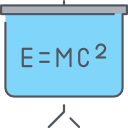Ditapis dengan

The Capital Structure Decisions of New Firms
We study capital structure choices that entrepreneurs make in their firms' initial year of operation, using restricted-access data from the Kauffman Firm Survey. Firms in our data rely heavily on external debt sources, such as bank financing, and less extensively on friends-and-family-based funding sources. Many startups receive debt financed through the personal balance sheets of the entrepren…
- Edisi
- Vol. 27 No. 1, Jan 2014
- ISBN/ISSN
- 1465-7368
- Deskripsi Fisik
- 372 p.
- Judul Seri
- The Review of Financial Studies
- No. Panggil
- RFS2701

The capital structure decisions of new firms
We study capital structure choices that entrepreneurs make in their firms' initial year of operation, using restricted-access data from the Kauffman Firm Survey. Firms in our data rely heavily on external debt sources, such as bank financing, and less extensively on friends-and-family-based funding sources. Many startups receive debt financed through the personal balance sheets of the entrepren…
- Edisi
- -
- ISBN/ISSN
- 8939454
- Deskripsi Fisik
- -
- Judul Seri
- -
- No. Panggil
- TRFS2701

Market structure, internal capital markets, and the boundaries of the firm
We study how the creation of an internal capital market (ICM) can invite strategic responses in product markets that, in turn, shape firm boundaries. ICMs provide ex post resource flexibility, but come with ex ante commitment costs. Alternatively, stand-alones possess commitment ability but lack flexibility. By creating flexibility, integration can sometimes deter a rival's entry, but commitmen…
- Edisi
- -
- ISBN/ISSN
- 221082
- Deskripsi Fisik
- -
- Judul Seri
- -
- No. Panggil
- -

The Market for mergers and the boundaries of the firm
We relate the property rights theory of the firm to empirical regularities in the market for mergers and acquisitions. We first show that high market-to-book acquirers typically do not purchase low market-to-book targets. Instead, mergers pair together firms with similar ratios. We then build a continuous-time model of investment and merger activity combining search, scarcity, and asset complem…
- Edisi
- -
- ISBN/ISSN
- 221082
- Deskripsi Fisik
- -
- Judul Seri
- -
- No. Panggil
- -

Industry aoncentration and average stock returns
Firms in more concentrated industries earn lower returns, even after controlling for size, book-to-market, momentum, and other return determinants. Explanations based on chance, measurement error, capital structure, and persistence in-sample cash flow shocks do not explain this finding. Drawing on work in industrial organization, we posit that either barriers to entry in highly concentrated ind…
- Edisi
- -
- ISBN/ISSN
- 221082
- Deskripsi Fisik
- -
- Judul Seri
- -
- No. Panggil
- -
 Karya Umum
Karya Umum  Filsafat
Filsafat  Agama
Agama  Ilmu-ilmu Sosial
Ilmu-ilmu Sosial  Bahasa
Bahasa  Ilmu-ilmu Murni
Ilmu-ilmu Murni  Ilmu-ilmu Terapan
Ilmu-ilmu Terapan  Kesenian, Hiburan, dan Olahraga
Kesenian, Hiburan, dan Olahraga  Kesusastraan
Kesusastraan  Geografi dan Sejarah
Geografi dan Sejarah